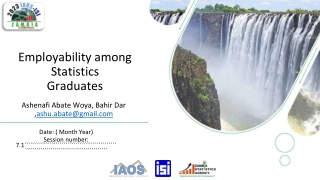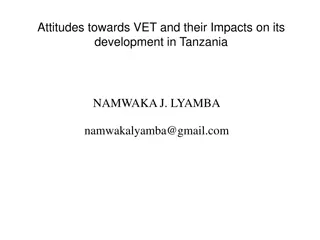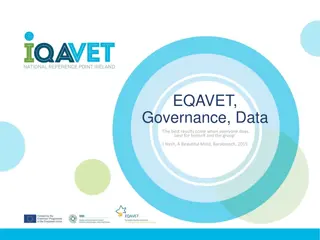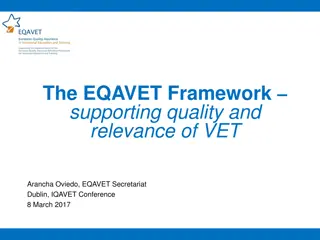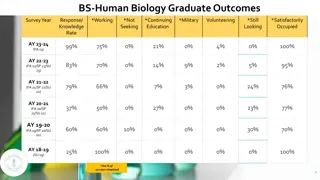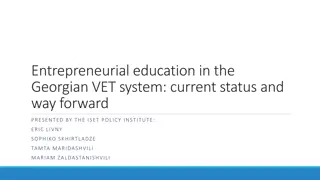European Policies and Current Trends in Tracking VET Graduates
The European policies on tracking VET graduates focus on improving data quality and availability. A network of experts was formed to develop guidelines and compare data, while current trends show varying tracking measures across Member States. Longitudinal tracking and migration of graduates are key aspects being studied for further development.
Download Presentation

Please find below an Image/Link to download the presentation.
The content on the website is provided AS IS for your information and personal use only. It may not be sold, licensed, or shared on other websites without obtaining consent from the author.If you encounter any issues during the download, it is possible that the publisher has removed the file from their server.
You are allowed to download the files provided on this website for personal or commercial use, subject to the condition that they are used lawfully. All files are the property of their respective owners.
The content on the website is provided AS IS for your information and personal use only. It may not be sold, licensed, or shared on other websites without obtaining consent from the author.
E N D
Presentation Transcript
European policies and current trends in tracking VET graduates Keith Brumfitt 7 March 2019
European Policy on tracking Based on a Council Recommendation in November 2017 The focus is an invitation to Member States to improve the availability and quality of data about graduate activities by 2020 The EQAVET Recommendation focuses on using VET tracking data as part of a quality assurance system Graduate is anyone completing any level of higher education or VET at EQF Level 4 and above Member States have been invited to participate in a network of experts whose work wil include questions on data comparability Within two years, and regularly afterwards, assess and report on the implementation of the Recommendation
The Network of Experts It met in October 2018 and February 2019 The network has 100+ members with various backgrounds Four sub-groups have been established to: develop options for comparative EU graduate data pilot exchanging data on migrant graduates compare the technical features of national graduate tracking indicators support national developments in VET graduate tracking The sub-groups mandates were agreed on 25 February
The sub-group on VET The VET sub-group will develop policy guidelines for graduate tracking systems in VET. These will take account of existing evidence and be based on: best practice in Member States findings of the study on mapping VET graduate tracking measures in EU Member States results of the work of the EQAVET network exploring future trends (big data analysis, social media, new communication tools etc) in graduate tracking
Current trends in VET graduate tracking (based on 2018 study) 24 Member States have VET graduate tracking measures. Of these 19 have national measures In 19 countries there are regular tracking measures - of these: eight cover IVET and CVET 17 include employment and education indicators There are 85 tracking systems - of these 59 use surveys and 35 use administrative data (nine systems combine surveys and administrative data) Longitudinal measures are rare - only one country measures this (nine systems follow up learners one year after graduating) Eight systems include drop outs and 1/3 of systems include graduates who migrate
Current trends (based on EQAVET secretariat s survey 2018) EQAVET indicator 5 measures where VET learners go when they complete their programmes. Does the national approach to quality assurance in VET include a system that collects information on graduates who complete Initial VET and CVET? IVET CVET
Current trends (based on EQAVET secretariat s survey 2018)
Current trends (based on EQAVET secretariat s survey 2018)
Thank you for your attention - any questions?

